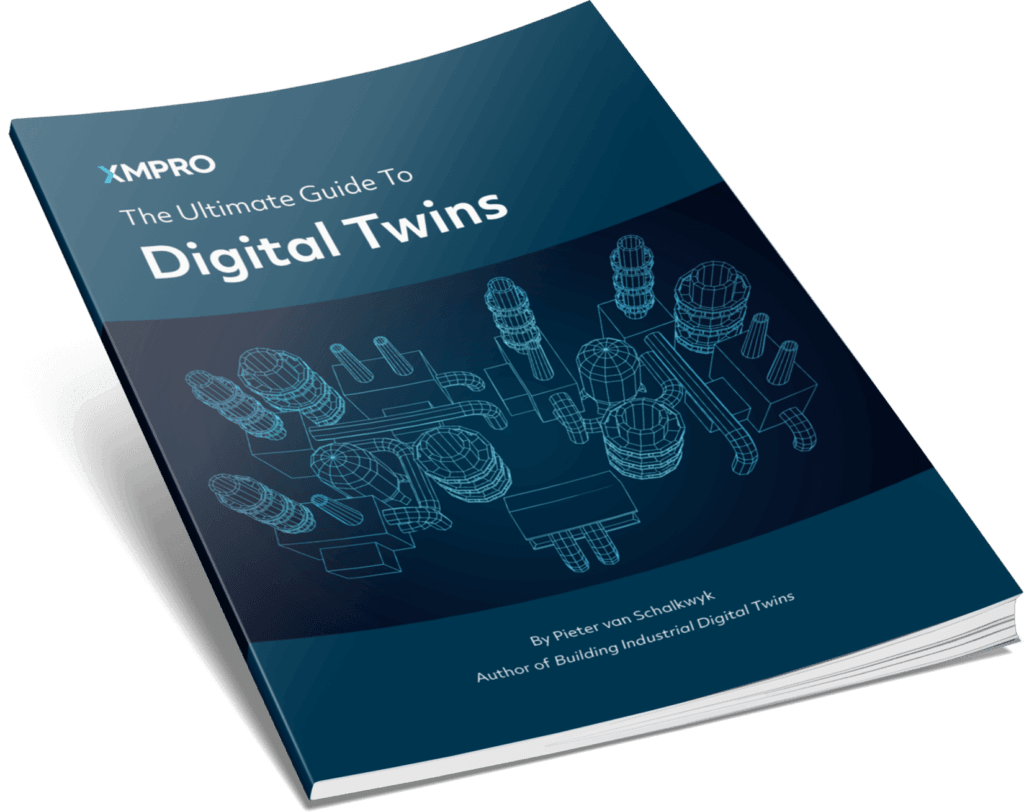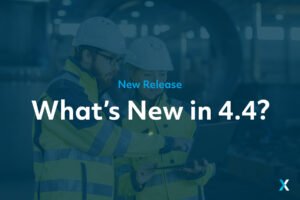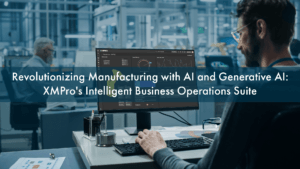Predictive maintenance is one of the areas that benefit most from machine learning algorithms with predictive capability.
Predictive maintenance has always focused on how to predict when certain conditions are going to occur and when machines will fail.
With the advent of machine learning and the ability to do it at scale, you now have a unique use case. Predictive maintenance is not just reserved for a few large organizations anymore. It’s now available to use for a broad range of asset-intensive industry applications.
How To Get Started
We often get questions around, “How do we get started with predictive maintenance?”.
And especially, “How do we use the Internet of Things to do predictive maintenance, not just on an ad hoc basis but on a real-time continuous basis?”
Before I jump into what IoT predictive maintenance solutions look like, here’s a quick history of how maintenance has evolved over the last couple of decades.
The Evolution of Maintenance
You started off with reactive maintenance. When things broke down, you would go out and fix that.
Then some preventative maintenance started to occur where you would do it based on fixed schedules. It’s like when you take your car in for scheduled maintenance every 10 000 miles or every 12 months. There’s a certain threshold and that dictates when maintenance will occur.
You would often maintain equipment that doesn’t need maintaining. Or you would find things break down before that scheduled interval.
In the case of warranties, manufacturers are trying to limit their risk. So they create those service intervals to minimize any impact it would have for them. Using the manufacturer’s warranty that they set up initially as your continued interval for scheduled maintenance may not be the best schedule to maintain assets on a long-term basis.
Quite often assets are maintained on a higher frequency than what is required. And quite often those maintenance interventions also create what we would call maintenance induced failures. If it ain’t broke don’t fix it is another way of looking at that.
You got smarter around understanding the condition of equipment by taking measurements with vibration monitors or ultrasonic devices. You would listen to cavitation on pumps and measure the vibration on certain equipment. You created a predictive maintenance capability but it was still manual.
This has been around for quite a while but it often required an operator going out with a measuring device. They would have to physically go out on a schedule, take certain readings, capture that data and plot it out. They would spend hours creating spreadsheets. Then based on their analysis, they would come up with a predictive maintenance schedule based on the condition of the equipment. It was a great idea but the execution was done on an ad hoc basis.
IoT-based Predictive Maintenance
The advent of Internet of Things is changing the way we do predictive maintenance. You can now have real-time monitoring devices at a low cost that send data to an algorithm on a continuous basis. It can detect whether there’s something going wrong with a machine or use machine learning to make a prediction.
That is where predictive maintenance is going now with what we call IoT-based predictive maintenance.
Here are the four main blocks of how maintenance has evolved:
- Reactive maintenance
- Preventative maintenance
- Manual predictive maintenance
- IoT-based predictive maintenance (where we are right now)
You can now take advantage of having real-time sensors installed on equipment. They will provide real-time data that you can put into predictive models to help you determine when something is about to fail or what the remaining useful life is for that equipment. You can then schedule maintenance based on that data.
What is the Internet of Things?
Another question that we often get, “What is the Internet of Things?” Here’s a great definition by Naveen Balani in his book Enterprise IoT: A Definitive Handbook:
Internet of Things is a vision where every object in the world has the potential to connect to the internet and provide their data so as to derive actionable insights on its own or through other connected objects.
The Internet of Things is not about connecting a whole bunch of sensors and just using that to run your factory on a day-to-day basis or get information, which is typically on the automation control side of the business.
The value comes from taking that information available to the business side of your organization. This will allow them to create actionable insights like predictive maintenance.
Combine Real-Time & Contextual Data
We’re getting insight into the condition of the equipment and then based on that we can plan interventions. We can either take one sensor or it can be a combination of many sensors and data sources. We may combine weather information with equipment data and then determine when to send a crew for predictive maintenance.
The traditional challenges with predictive maintenance were that the data was limited to sensor data. And it was mostly used for operational control, where we wanted to control the machines, make them faster, slower, or switch them on and off. From an automation perspective just around the control side of things.
Machine Learning at Scale
Predictive maintenance was often based on predictive analytics that required expert data scientists and complex machine learning models. This meant that machine learning was limited to a few large organizations. It wasn’t something you could do at scale.
Even at those large organizations, you had to do it on a batch basis. You would go out and take readings and put that data into the machine learning tools to come up with schedules.
A lot has changed since them. You now have the ability to continuously parse data through machine learning models and continuously get predictions back. The new low costs mean that it’s not just reserved for large organizations anymore. It’s also available to small and medium-sized businesses. It’s available to OEM’s and equipment manufacturers that want to provide predictive maintenance services with the equipment they are selling.
The #1 Question You Need To Answer
The biggest question that we get is, “How do I know where to start with this predictive maintenance thing?”.
The best way to approach this is to say, “Where will I find the most ROI for this?”.
What you don’t want to do is start it with all the equipment and all the potential things that happen in your business.
You want to narrow it down to specific pieces of equipment that will give you the best return on investment in the short term, and then expand that out.
We often start with, “Where’s the ROI in the business?”. That’s more of a problem driven approach than a discovery-driven approach. A discovery-driven approach, which we see quite often, is where you say, “I’ve got all of this data, what can I do with it?”
A problem-driven approach focuses on something specific that you want to do. “I want to reduce the downtime of my cooling tower pumps. If I can reduce that by ten percent I know what the impact will be. What maintenance tasks am I looking to improve?”
Start With The Business Problem
We like to restate the problem. Doing this ensures that we start with the business question that we’re trying to answer. We don’t start with, “I have sensors, what can I predict?”
We’d rather start with, “What would the impact of zero downtime be for certain of my critical assets?”
For example, “Zero downtime on my cooling tower pumps will increase production yield by fifteen percent.”
That helps you to identify the assets that are suitable for predictive maintenance. Not all equipment behaves in a way that you can predict it’s likelihood to fail. Because of that, you also need to do a further analysis by taking a reliability centered maintenance approach. Define what the failure modes are and whether those failure modes are completely random like you would find with a light bulb, or if you can understand the deterioration and predict that it is likely to fail.
Analyze & Rank Your Assets
Above we have a ranking matrix where you take the potential failures or the historical failures that occurred on certain equipment, rank the number of occurrences and add the business impact that it has.
For example:
If a cooling tower pump goes down, does it bring down the whole production line? If it does, the impact is massive.
Taking a matrix based approach like this, we analyze the failure modes for specific critical equipment. It then allows you to create a ranking matrix with four quadrants.
You look at the business impact of a certain failure and assess your ability to do predictive maintenance on it, by asking questions like:
- Do we currently have sensors on it?
- Is it something that we can predict?
That will give us a ranking matrix. We do this on a scale of one to ten on each axis.
Now we look at the cooling tower pump example and the failure mode where there is complete pump failure. We have existing flow meters on it and the impact is significant. This is an area where we would like to start with predictive maintenance right now.
Just below that are two other areas where the pump fan is not starting, or the fan won’t turn off. This means the water temperature is wrong, which is affecting the supply to the production plant.
Those two scenarios don’t have detection capabilities yet, but the impact is high. It’s easy to add the IoT sensor-based detection capabilities. In that instance, we can plan for that and get it ready.
The other two axes are where the business impact is low. Here you need to consider whether it’s worth your while.
Conclusion
This outlines our approach to deciding which assets provide the most leverage for IoT-based predictive maintenance.
It gives you a business-oriented system to follow, which focuses on the ROI of using machine learning algorithms to predict equipment failure.






















